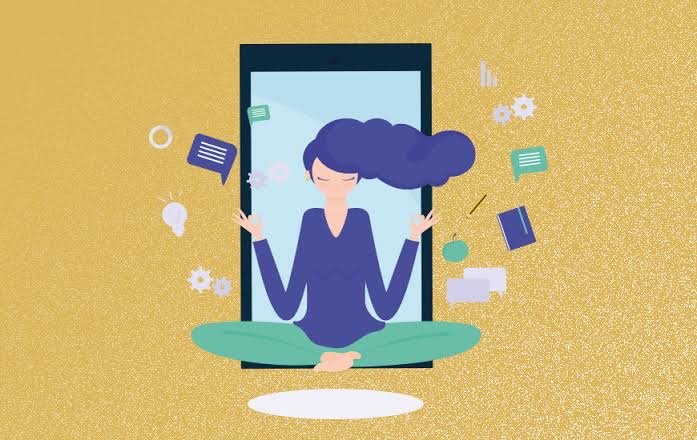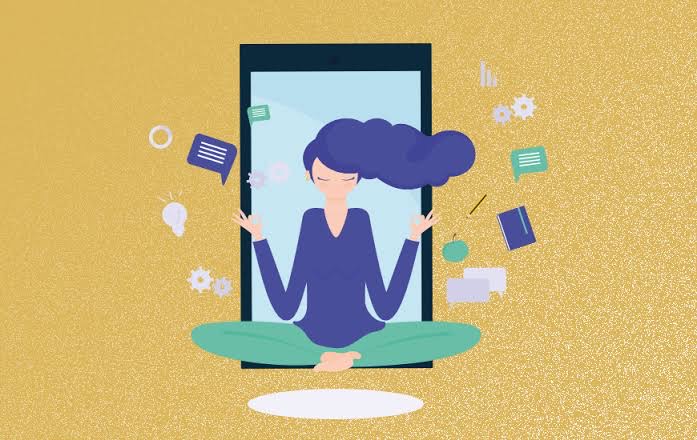Mindfulness in the Digital Age
Lately my iPhone, the keeper of my emails, to-do lists and sleep stats, has begun to feel like an extensive self-help library. As I have begun learning and practicing mindfulness, I have undergone the task of testing the best meditation apps in order to share with you, dear reader, tips and insights from my discoveries.
I downloaded five different apps that promised, in one way or another, to bring me closer to my best self. Feeling low? Here, try this 10-session course on happiness. Not sleeping well? You definitely need to unwind with some calming meditation tunes. Suffering from stress? There’s a few hundred meditations for you.
The promise of using an app to clear a new path to spiritual enlightenment feels a bit too good to be true. So I began exploring the apps Calm, Headspace, Insight Timer, 10% Happier, and Simple Habit with the hope that one of them would help me make more time to quiet my mind daily.
The first thing to understand about the apps themselves is that many of them have very different personalities (and prices. Meditating with Calm, the best iPhone app of 2017 feels like having the soothing voice of Morgan Freeman in your pocket. It’s the visual equivalent of watching a sunset, when life feels peaceful and still.
Headspace, which has been my go-to for a while now, is narrated by its owner, Andy Puddicombe, who as a wonderfully calming voice that really welcomes you into each meditation. The app’s design features a warm interface that has fun illustrations and a well-organized library of choices. It gives you permission to feel playful while sitting with what can be some very uncomfortable thoughts and feelings. Headspace also, like most of the others, offers a way to track how frequently you meditate and also focuses on “streaks” and how many days consecutively you’ve meditated. Headspace keeps track of your meditation streaks and awards you in badges and praise.
Some apps have come to recognize how important it is to be able to communicate with a real life person. 10% happier markets themselves as “the app for fidgety skeptics” offers personal coaching from experts who typically reply to questions within a day. Being able to have a conversation about how to stay mindful in your day to day life is incredibly helpful if you plan to meditate mostly with an app. Simple Habit has challenges for users to try and achieve a meditation goal together. The app shows you how many people are meditating and encourages you to invite a friend to join you.
It’s in your bank account’s best interest to spend time to carefully choose what app fits you best. All the apps I downloaded are free but then require a monthly or annual membership to access their full services. Monthly and annual subscriptions for Calm, Headspace, Insight Timer, Ten Percent Happier and Simple Habit range from $9.99 per month to $96 per year — that’s a lot of dough! So if you are struggling to choose between apps, I highly recommend taking advantage of free trials first.

Now can you really cultivate mindfulness via app as opposed to in person classes and training? Headspace has published research suggesting its app may increase compassion and improve your mood. And Calm published a paper on the feasibility of college students using their app to reduce stress that you can read here.
There is, however, no scientific consensus that app-based meditation will lead to the same positive outcome as an in-person practice. There seems to be a rush to translate mindfulness that works well and insert it into technology. But the thing that most of these apps seems to be is a lack of helping users reach a goal. All the apps I tried could benefit from a brief orientation that helps people understand how the tool in their hands is meant to be used in their practice.
My quest for calm on my phone has taught me to look past the overwhelming content of these meditation libraries and instead concentrate on the personal goals I am working to achieve in my meditation practice—being more mindful, sitting in awareness, being present. I don’t want to feel guilty for missing a session or ignoring all the notifications telling me to meditate all throughout my day.
Instead I am going to take the lessons I’ve learned during this journey and commit to just setting a timer (on my watch, instead of phone) so that I can spend time with the only source I actually need to be with to meditate—myself.
And if you want to get a start on or continue a meditation practice, you can try out the 7-day Meditation Challenge created by yours truly. Would love to hear your thoughts and feedback!







